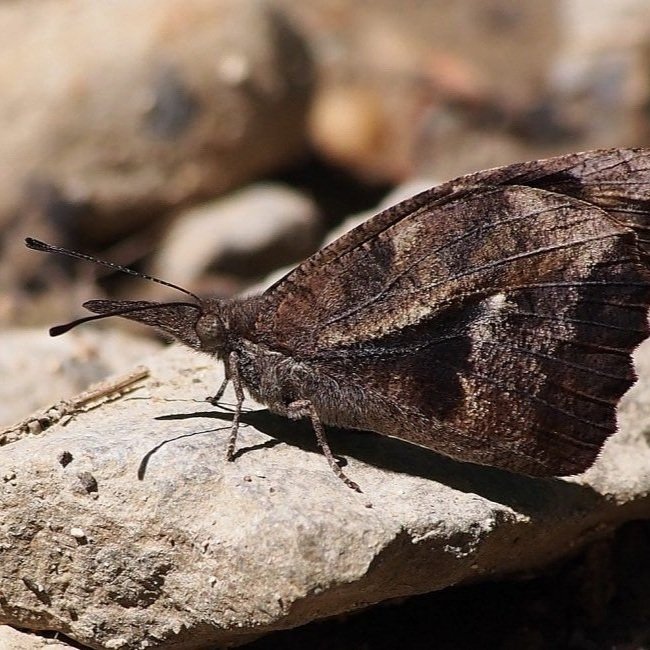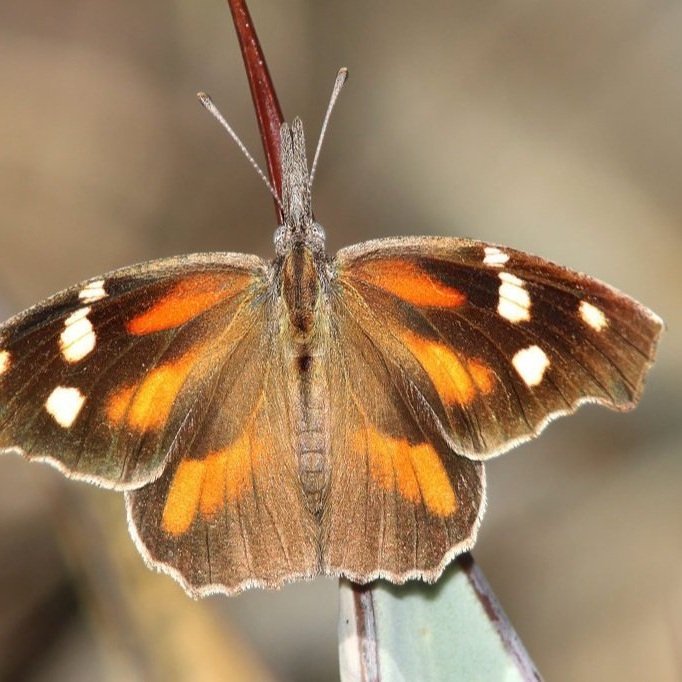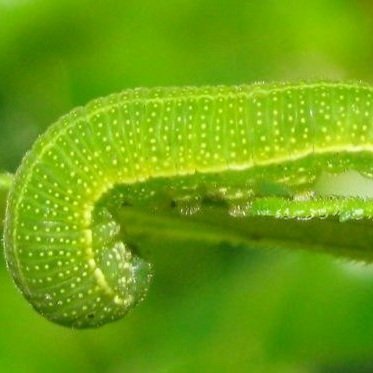INSECTS
American Snout Butterfly
The American Snout Butterfly (Libytheana bachmanii) gets its name from its elongated mouthparts that do indeed resemble a snout. These insects enjoy feeding on the nectar of goldenrod, aster, and dogwood flowers among many more. They tend to inhabit brushy fields, forest clearings and roadsides. As caterpillars these butterflies are dark green, but when fully mature retain wings with orange and white patterning and overall black/brown shading.
Though this creature is native to the South and Southwest it is included in the ecology of Pease Park because of its sporadic mass migrations that pass through Pease Park and much of Austin. Population booms of American Snout Butterflies are believed to be correlated to intense rain following prolonged periods of drought. This is in part because of abundant blooms of the hackberry trees that are integral to this insect species. The leaves of the Hackberry tree provide a place to lay eggs and then essential food as caterpillars develop.
Salt Marsh Caterpillar and Salt Marsh Moth
These densely-haired “woolly bear” caterpillars turn into moderate-sized moths with spotting on the wings. The larvae feed on leaves from a wide variety of plants, both woody and nonwoody. When young, the caterpillars are gregarious (feed in groups). As they grow larger, they travel across the ground to find more food.
Robber Fly (Efferia aestuans)
Robber Flies have stout, spiny legs, a dense moustache of bristles on the face, and three simple eyes between their two large compound eyes.
They have a short, strong proboscis used to stab and inject victims with saliva containing neurotoxic and proteolytic enzymes that paralyze and digest the insides. Then, the fly sucks the liquefied meal out of its prey (smaller insects).
Red Admiral
The Red Admiral butterfly has a distribution that covers North and South America, Europe, and Asia! These are the most commonly seen butterfly in urban landscapes because of their many host plants - more than 50 different plant genera.
Male Red Admirals are highly territorial so they are often seen chasing each other from their roosting spots.
Butterflies that live in more northern latitudes migrate to Southern states, like Texas, to avoid a loss of food resources in the winter.
White-lined Sphinx
This moth feeds on the nectar of a variety of flowers. With wings 3 inches wide, this moth is often mistaken for a hummingbird. And similarly, they use a proboscis (straw) to slurp up the nectar.
Gray Hairstreak
This moth feeds on many flower species and are dispersed throughout the continental United States. This one is enjoying the nectar from a Bluebonnet at Pease Park.









